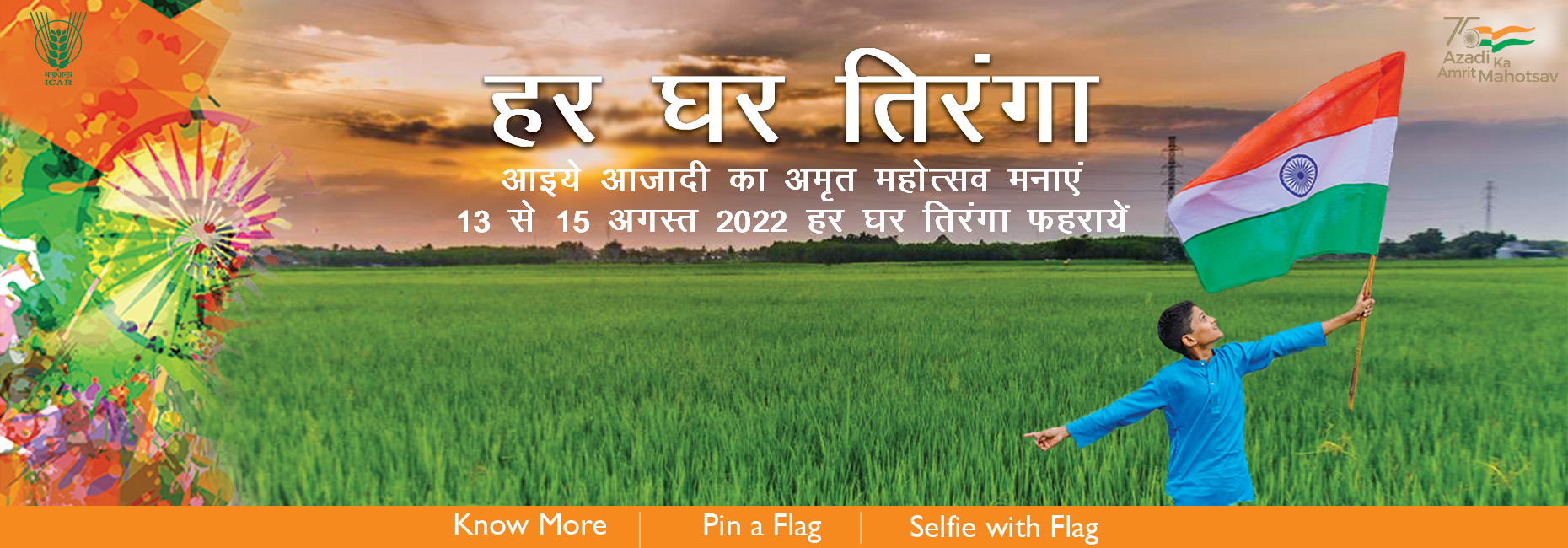अप्रैल - जून 2013
For more than a decade, Indian agriculture is encountering frequent occurrence of climatic extremes in form of droughts, floods, cyclones, sea-level rise, cold-and heat-stress. At any given time, one or the other region in the country experiences some form of climatic stress that results in considerable loss of agricultural production. Most climate models indicate that such trends will get further magnified in future which could result in greater instability in food production and threaten the livelihood security of farmers. Crop simulation studies indicate that future impacts on crops vary depending on the season and the geographical location with crops like wheat, rice and maize projected to record decreased yields due to rise in temperature while legumes like soybean, groundnut and chick pea are likely to gain due to increased CO 2 and rainfall
.
For a developing country like India with a large farm economy, the challenge lies in ensuring enough food for our population by adapting our agriculture to climate variability while contributing to global mitigation efforts. In this endeavour, deployment of new technologies and policy reforms play equal role. Mitigation can have a direct effect on climate change per se; adaptation can combat the severity of the impacts. Judicious natural resource management in vulnerable areas such as coastal zones, drought and flood prone, and hilly regions would be the first step towards promoting climate resilient agriculture. Efficient use of adapted germplasm and resource conservation based technologies with focus on water conservation and increasing crop water use efficiency are the essential pillars of climate resilient agriculture in the country. Moreover, improved weather forecasting and better communications can assist in contingency planning. Education, training and efficient rural extension services can help in adaptation at the community level.
Considering the potential impacts of climate change; current state of natural resources and the demand for producing more in difficult environments, it is important to develop appropriate
adaptation strategies. These strategies should be climate smart which as per FAO definition of climate smart agriculture (CSA) ‘sustainably increases productivity, resilience (adaptation), reduces/ removes greenhouse gases (mitigation), and enhances achievement of national food security and development goals’. Even if the magnitude of climate change remains lower than as projected today we need to adapt because of continuous exposure to large climatic variability. Significant green house gas (GHG) emission reductions, of the order of 10 to 25%, are possible through changing water management regimes in rice production. Conservation agricultural practices have been shown to be of large significance in increasing the productivity of land, restricting land-degradation, and promoting carbon (C) sequestration. Laser land leveling is another option that improves water and nutrient use efficiencies in irrigated areas.
With intensification of agriculture, groundwater extraction has witnessed an increase even in the surface water irrigated regions. Management of climate change also requires the creation of additional water storage. Hence, there is a need for breakthrough in the construction design and technology of water-storage structures to store the heavy monsoon runoff. The use of efficient water utilization methods such as micro-irrigation coupled with groundwater use may lead to reduction in depletion of groundwater. Conjunctive management of surface and groundwater offers opportunities to improve water productivity and to save energy. Such resource conserving technologies in a rice-wheat system also have pronounced effects on mitigation of GHG emission and adaptation to climate change.
Further, an increase of 5 to 10% in fertilizer use can lead to considerable reduction in cost of cultivation and higher yields, as also mitigation of nitrous oxide emissions. Improving the efficiency of energy use in agriculture by using better designs of machinery, increasing fuel efficiency in agricultural machinery, use of wind and solar power, and use of laser levelers also leads to mitigation. Improved management of livestock diet through use of feed additives, substitution of low digestibility feeds with high digestibility ones, concentrate feeding, and changing microflora of rumen also leads to a reduction in methane (CH 4) emission.
The ICAR has launched a programme, ‘National Initiative on Climate Resilient Agriculture (NICRA)’ in 2011. Some salient achievements of the initiative include, computing vulnerability index for 572 districts and preparation of Vulnerability Atlas of India for Agriculture; Automatic Weather Stations were installed at 100 Krishi Vigyan Kendras across the country to generate crop yield and climate data from experimental farms on longterm basis; evaluation of major crops like wheat, rice, maize, pigeon pea, mango and tomato for tolerance to abiotic stresses (drought, heat, flooding, salinity) and work on genetic enhancement for stress tolerance/resistance, in a multi-institutional and multi-disciplinary network mode.
The Indian agriculture is moving forward towards climate change adaptation to increase food production and sustainable development through proper management of natural resources like water, energy and biodiversity by applying modern scientific tools and capitalize the indigenous knowledge of the farmers. Some of the recent initiatives have started to yielding results







 कृषि अनुसंधान एवं शिक्षा विभाग
Department of
कृषि अनुसंधान एवं शिक्षा विभाग
Department of










